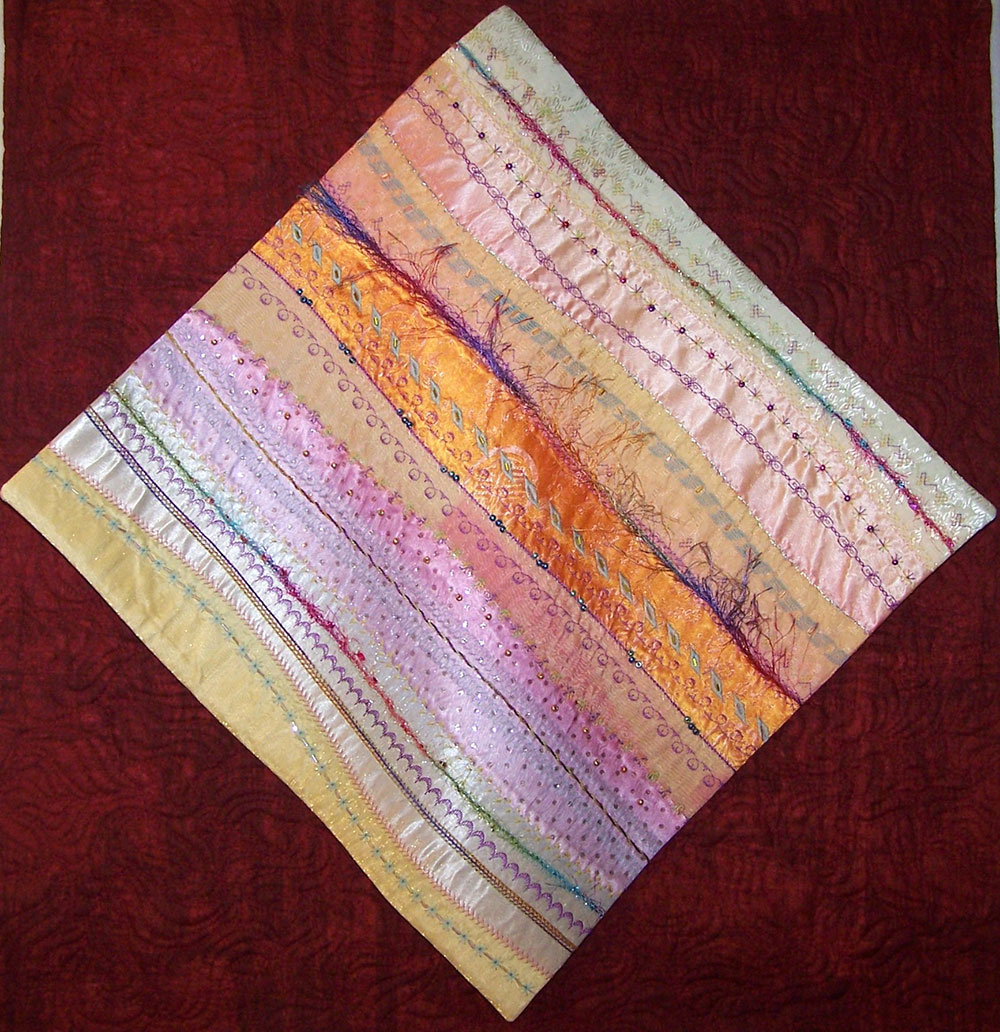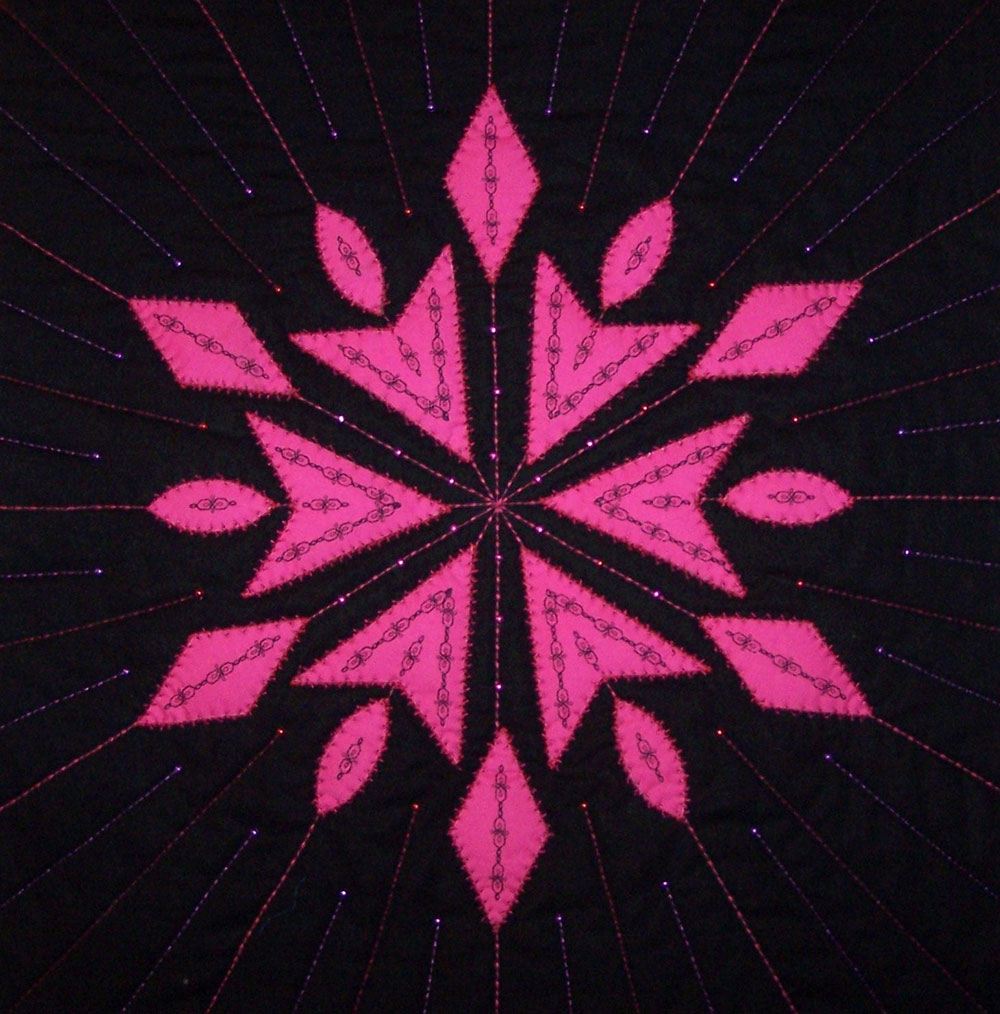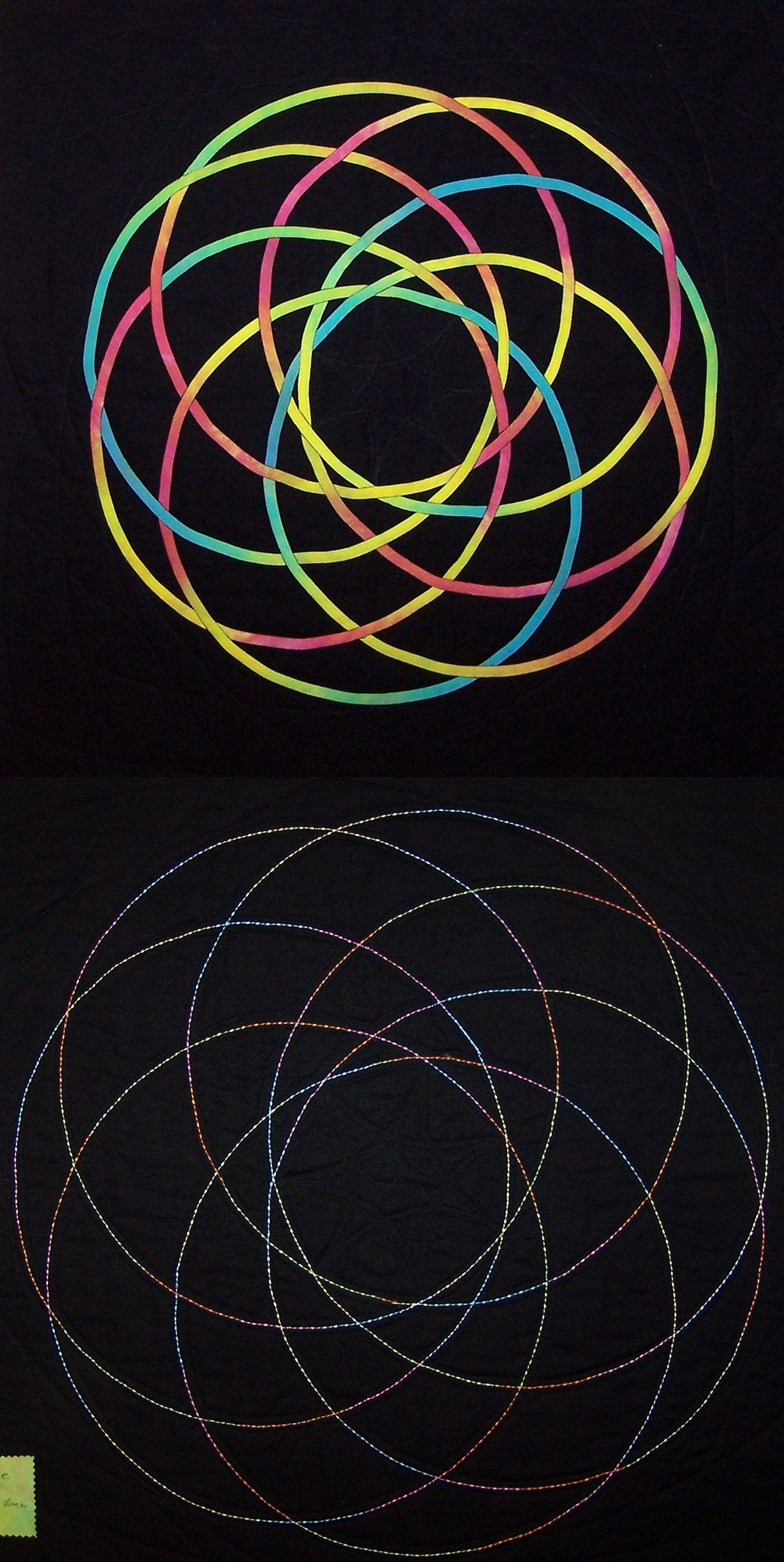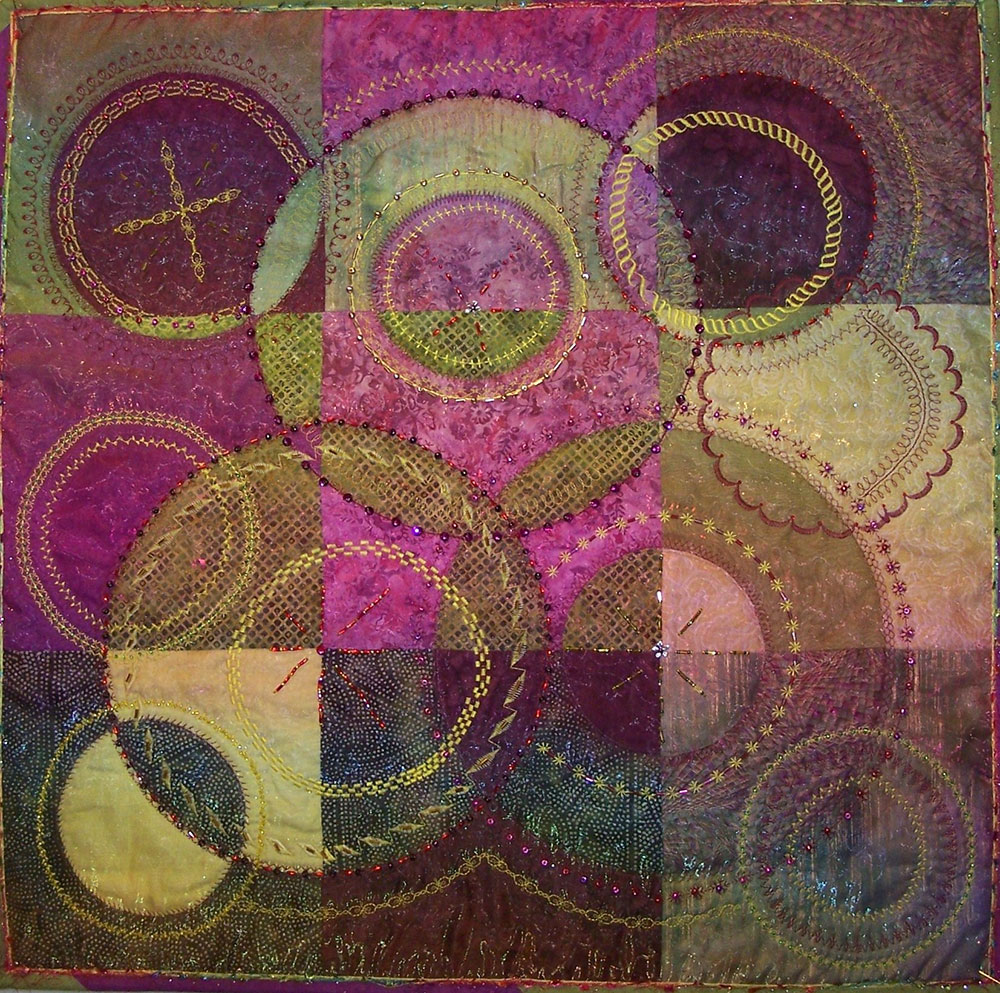My sewing machine was almost twenty years old before I looked at any of the other stitches it offered besides the straight stitch, which I used for piecing, and the zigzag stitch, which I used for mending. What a waste, yet at the same time, what an opportunity.
I decided to explore this neglected resource. I made several twelve-inch sandwiches of muslin and a stabilizer. And while I was at it, I decided to evaluate the multiple stabilizers I had on hand, so I used a different type of stabilizer on each page.
Using a 50 weight thread, I began stitching at the default setting for each stitch. As I stitched down the page, I would lengthen/shorten and widen/narrow the stitch. I labeled the top of each row of stitches with the stitch name/code and I wrote the width and length changes along the side of the row. I was totally amazed how the stitch appearance changed with variations in length and width. After I filled seven pages, I stitched them together along the edge to create a handy reference book.

Avis Challenge. Multiple decorative stitches and techniques were used on strips of Tia Silk to create this piece of art.
I use the term decorative stitch loosely as even those stitches thought of as utility stitches can be decorative when length and width are altered or when used in rows and in conjunction with other stitches.
The decorative stitches on your sewing machine can be used to enhance your appliqué edges, giving them a lacier look. They can be used as a quilting stitch, giving the quilting itself a decorative element. They can also be the featured element in a piece of art.
Tips for Using Decorative Stitches

Star Challenge. Decorative stitches were used to enhance the appliqué pieces. They were also used along the edge which gives the appliqué a lacey look. The triple stitch with a 12 weight thread adds texture to the quilting line.
-
- If you are stitching on fabric, you will need to add a stabilizer to keep the fabric from gathering. All stabilizers worked well in my experiment except for the T-shirt stabilizer. I guess it is only meant to stabilize T-shirts. It is said that if you are stitching through a quilt sandwich, no stabilizer is needed as the batting will serve that purpose. However, I find that the addition of a stabilizer works better than just the sandwich without the stabilizer.
- Heavier threads can add texture. Use a top stitch needle and keep the decorative stitch simple. Use lighter weight threads on top and in the bobbin when stitching more complex designs.
Creative Ideas for Working with Decorative Stitches

Coterie. The triple stitch was used as the quilting line on the back of the quilt which also served as the appliqué guide line on the front of the quilt.
-
- Vary the length and width of the stitch.
- Use a large straight stitch and then hand-weave heavier threads such as pearl cotton through the stitch.
- Use a double thread through the needle. Using a poly thread with a metallic thread adds strength to the metallic as it rides through the metallic needle.
- Using a double needle can create two even rows of parallel stitching.
- Couch down yarns, ribbons, floss, etc. by stitching over them with a decorative stitch.
- Repeat multiple rows of the same stitch.
- Experiment with different types of threads—poly gives a sheen to the stitch, cotton has a fuller look, metallic adds glitter.
- Experiment with different weight threads.
- Try using your decorative stitches while creating a crazy patch.
Now that you’re armed with some tips and creative ideas for incorporating the decorative stitches you already have available to you on your machine, it’s time to explore and have some fun!
Related Videos: How to Satin Stitch with Machine Quilting Quilt Fabric Ideas: Stitched Fusion Stitching Techniques for Machine Quilting Have something to add? Leave a comment or email editor@nationalquilterscircle.com.


How can I save this article so I can find it easily at a later time? I am a premium member.
I need to learn how to use all stitches on my machine
I'd like to receive the machine guide
I want learn the method to be a better quilter.
I, also, would like to see how the Bling Quilt, is decorated.
N/A
Thank you so much, Carol! An exciting array of ideas to explore.
I'd love to see how this Bling sample was made